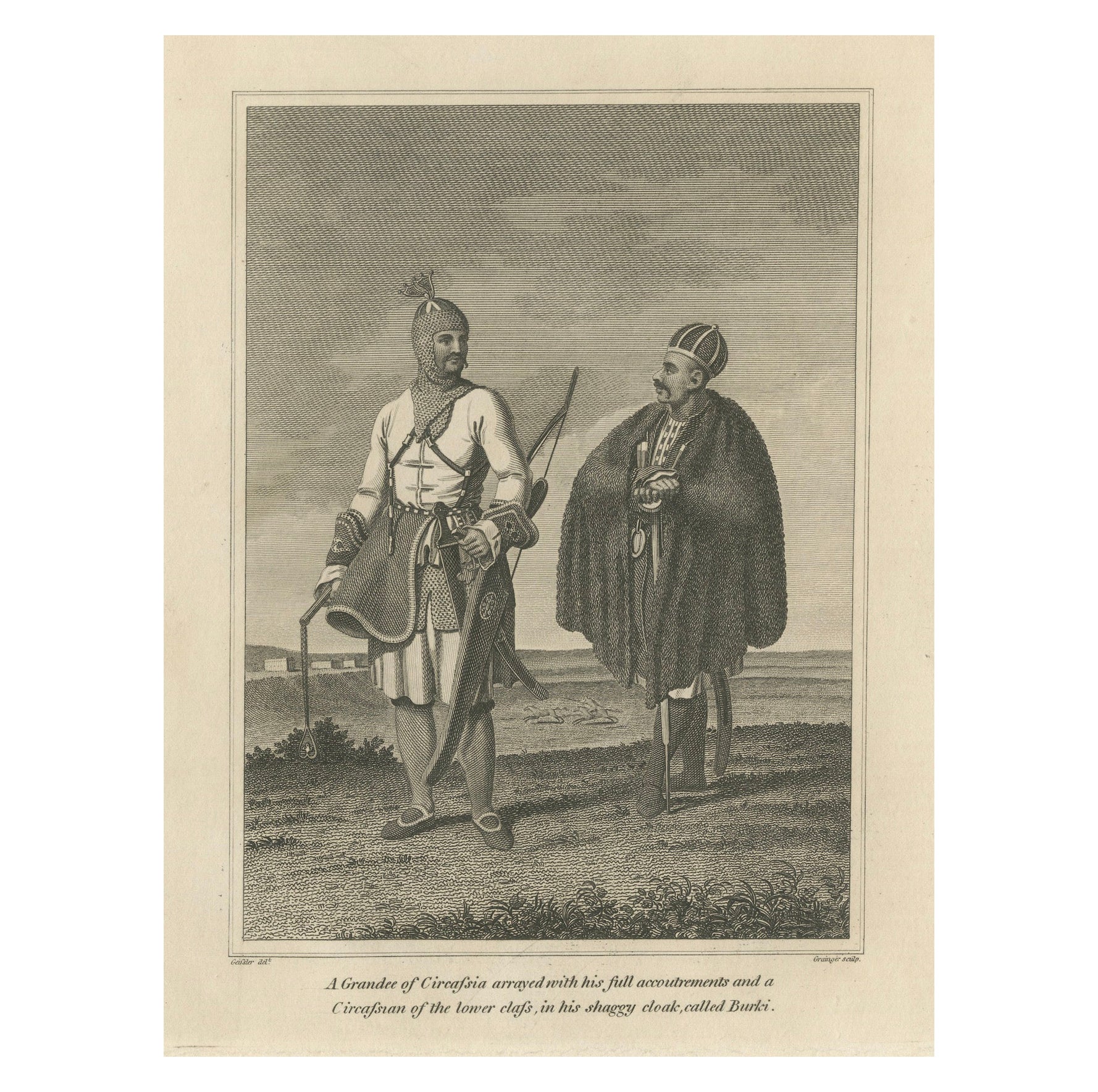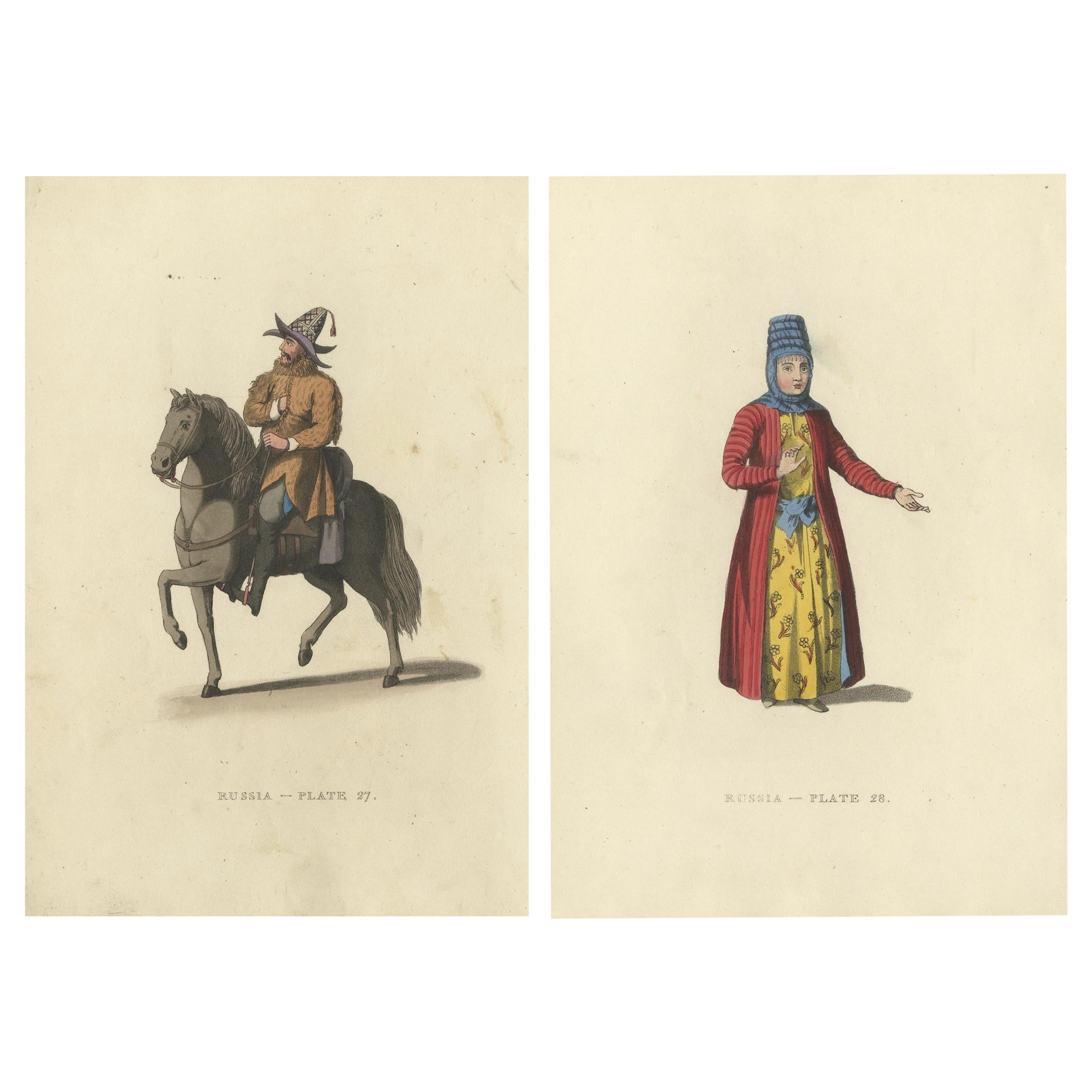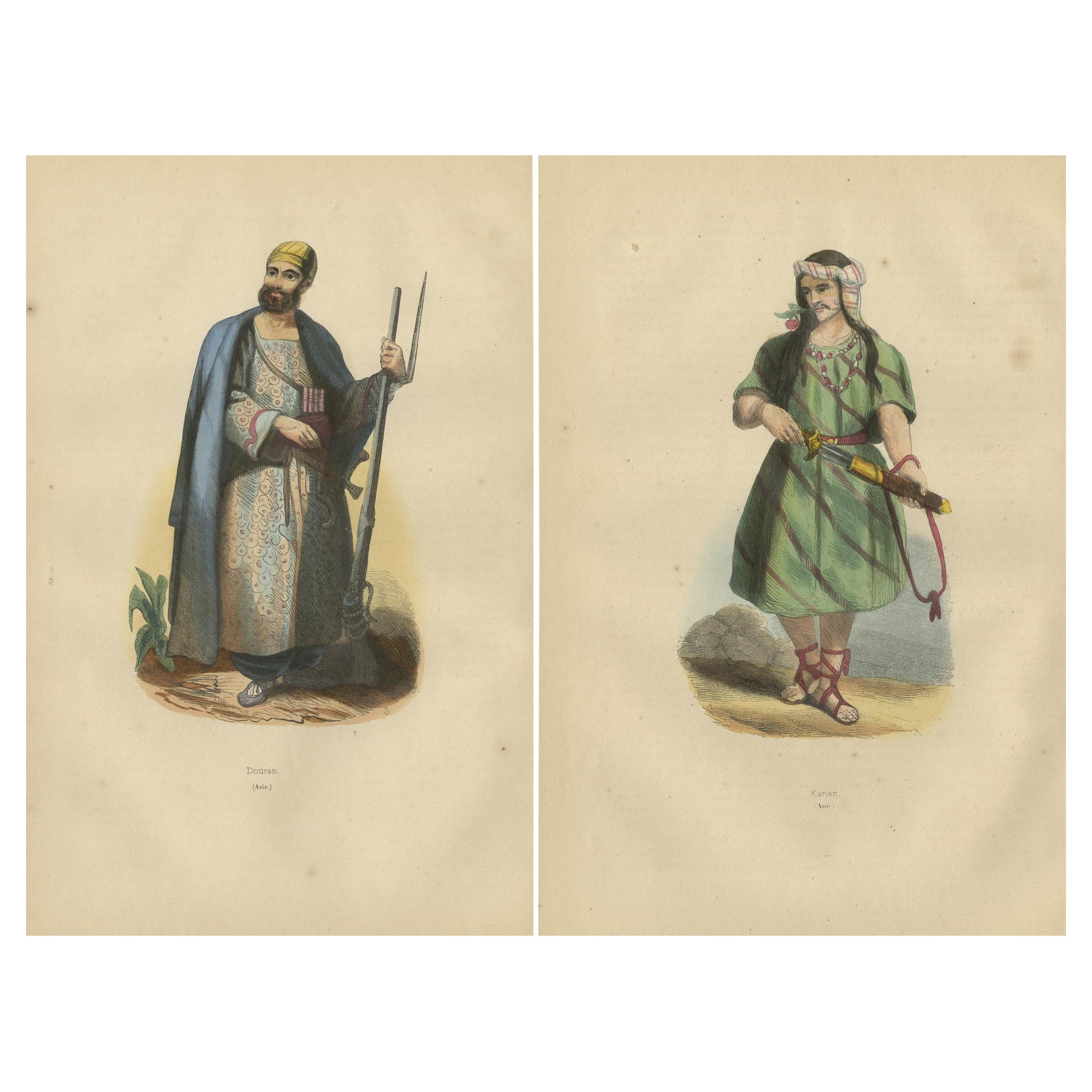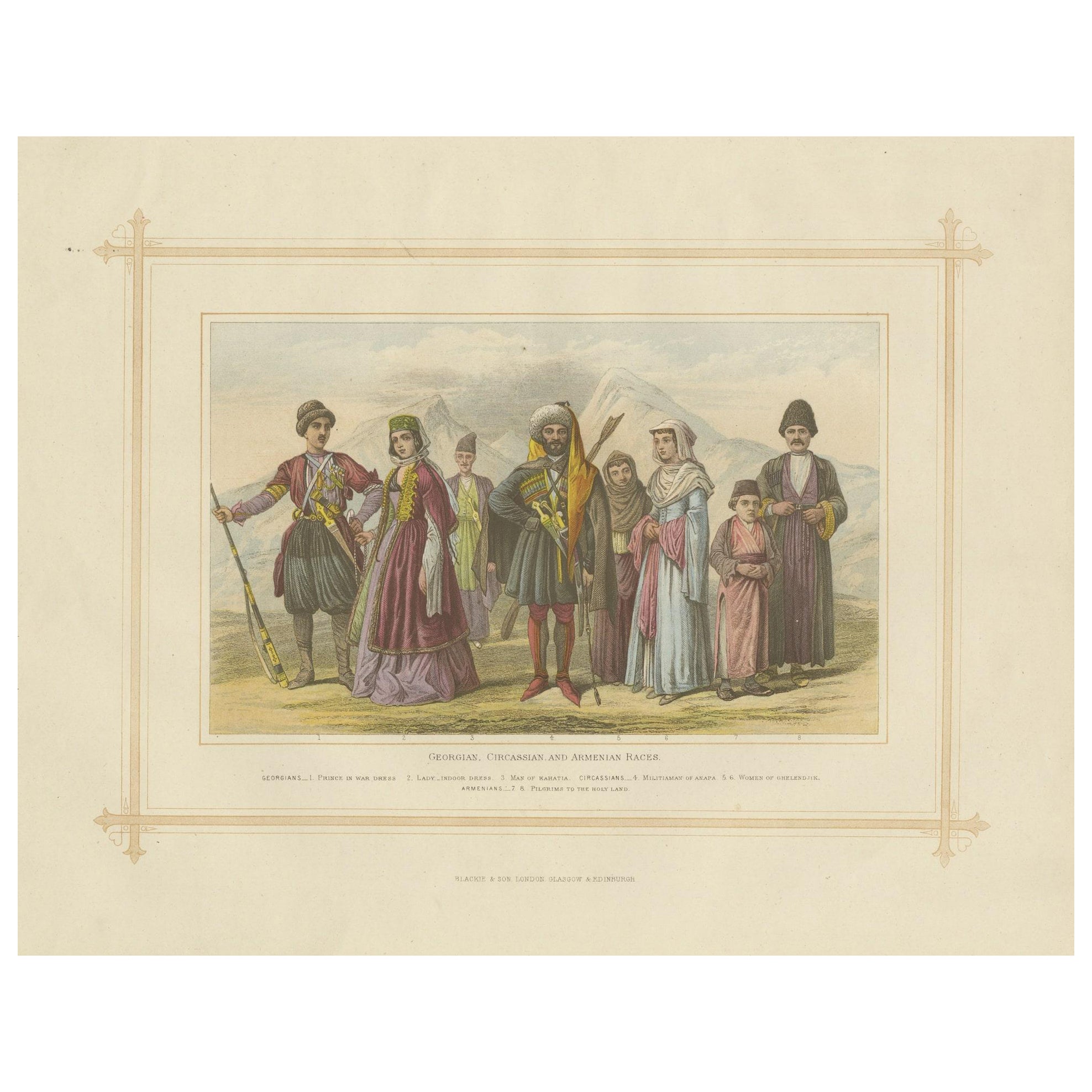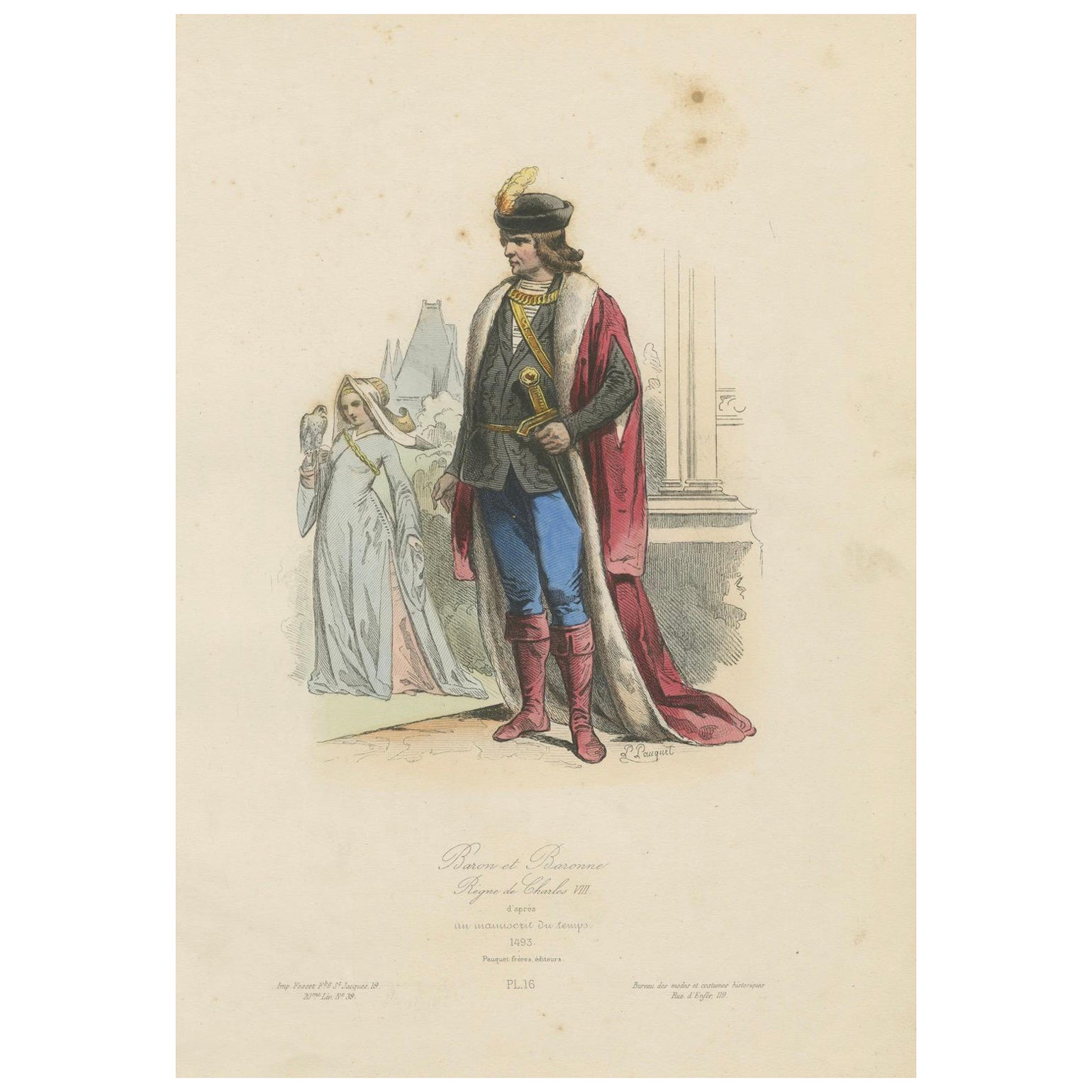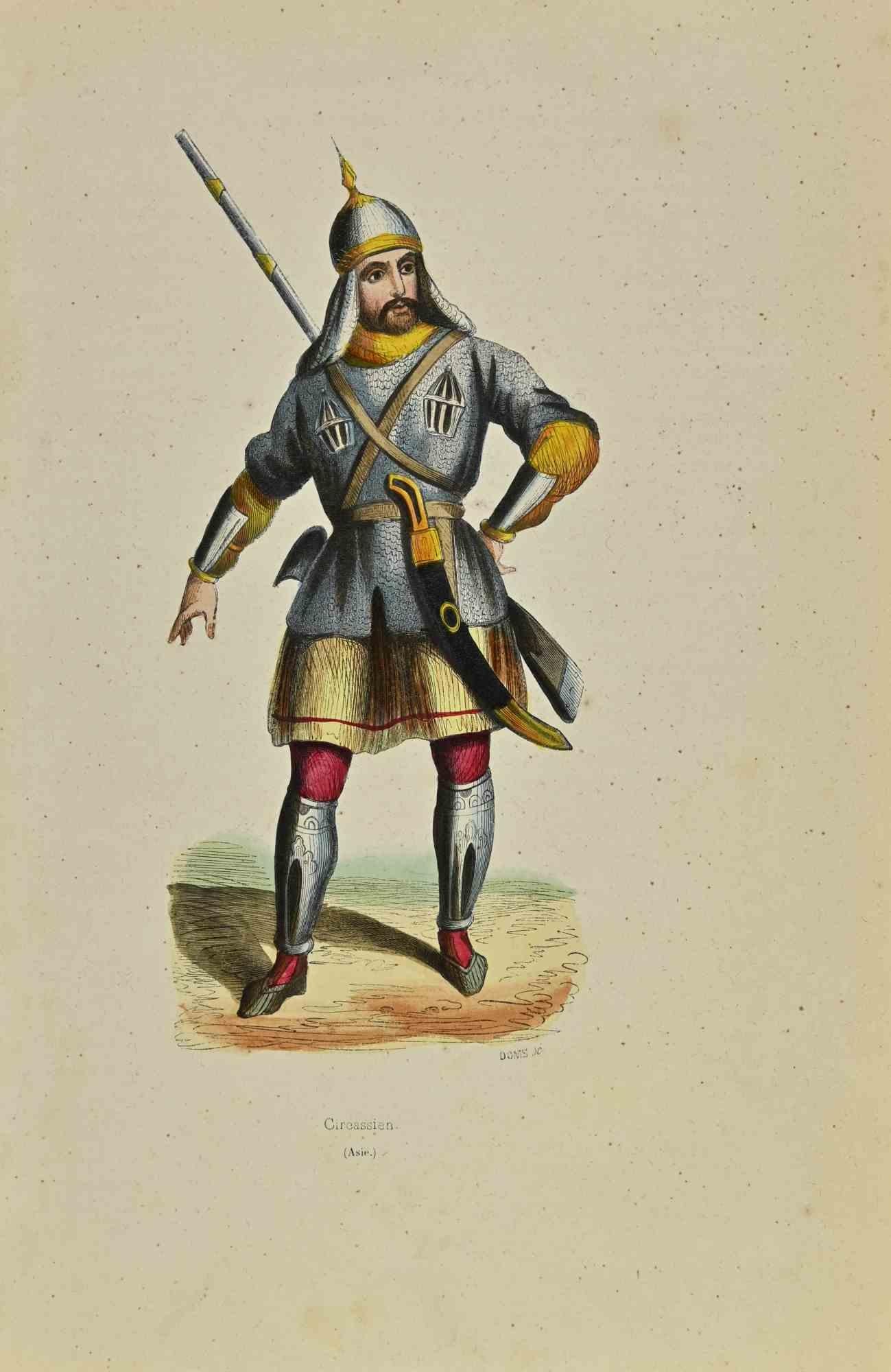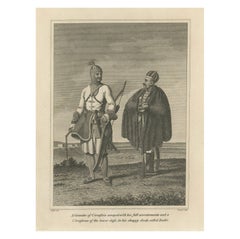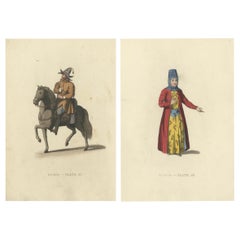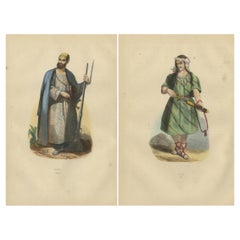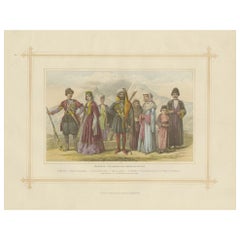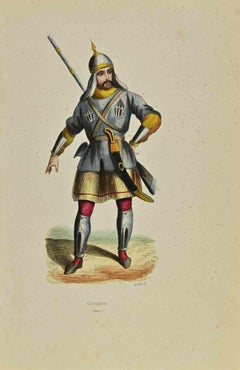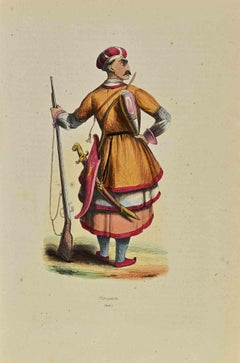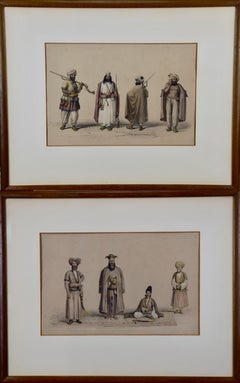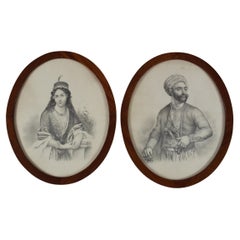Items Similar to Circassian and Imeretian Princes in Traditional Attire, 1844 Lithographs
Want more images or videos?
Request additional images or videos from the seller
1 of 9
Circassian and Imeretian Princes in Traditional Attire, 1844 Lithographs
$248.58per set
$310.72per set20% Off
£184.02per set
£230.03per set20% Off
€208per set
€260per set20% Off
CA$343.97per set
CA$429.96per set20% Off
A$379.16per set
A$473.95per set20% Off
CHF 198.39per set
CHF 247.99per set20% Off
MX$4,652.17per set
MX$5,815.22per set20% Off
NOK 2,497.39per set
NOK 3,121.74per set20% Off
SEK 2,335.46per set
SEK 2,919.32per set20% Off
DKK 1,583.71per set
DKK 1,979.64per set20% Off
About the Item
Title:"Circassian and Imeretian Princes in Traditional Attire, 1844 Lithographs"
This horizontal compilation features two lithographs from Auguste Wahlen's 1844 series, "Moeurs, Usages et Costumes de tous les Peuples de Monde," depicting princes from Circassia and Imeretia in traditional attire.
These prints, made using handcoloured lithography, highlight the distinctive cultural dress and accessories of these regions in Asia.
The Circassian prince is adorned in a decorative military-style outfit, complete with armor and a bow, symbolizing his warrior status. The Imeretian prince's attire is similarly martial but incorporates more vivid colors and a less formal style, reflecting the different ceremonial and functional aspects of his region's attire.
The attractiveness of these prints lies in their vibrant coloration and meticulous detail, which not only make them visually striking but also serve as valuable historical records of cultural heritage and traditional dress. The technique of handcoloured lithography allows for precise detail and rich hues, enhancing the visual impact and historical authenticity of each figure.
Keywords:
- Antique Circassian prints
- Imeretian historical attire
- Handcoloured lithographs
- 19th-century cultural costumes
- Auguste Wahlen artwork
- Collectible historical prints
- Traditional warrior attire lithographs
- Asian prince costumes
- Ethnographic art prints
- Vintage military fashion prints
These keywords would help collectors, historians, and art enthusiasts locate prints that offer insights into the traditional and ceremonial attires of historical figures from diverse cultural backgrounds, particularly those from lesser-known regions.
- Dimensions:Height: 10.12 in (25.7 cm)Width: 6.7 in (17 cm)Depth: 0 in (0.02 mm)
- Sold As:Set of 2
- Materials and Techniques:
- Period:
- Date of Manufacture:1844
- Condition:Condition: Good, given age. Faintly browned, and with some small stains. Some glue remains (from binding) in the far left margin (not affecting image). General age-related toning and/or occasional minor defects from handling. Please study the scans.
- Seller Location:Langweer, NL
- Reference Number:Seller: BG-12722-43, BG-12722-451stDibs: LU3054341384642
About the Seller
5.0
Recognized Seller
These prestigious sellers are industry leaders and represent the highest echelon for item quality and design.
Platinum Seller
Premium sellers with a 4.7+ rating and 24-hour response times
Established in 2009
1stDibs seller since 2017
2,613 sales on 1stDibs
Typical response time: <1 hour
- ShippingRetrieving quote...Shipping from: Langweer, Netherlands
- Return Policy
Authenticity Guarantee
In the unlikely event there’s an issue with an item’s authenticity, contact us within 1 year for a full refund. DetailsMoney-Back Guarantee
If your item is not as described, is damaged in transit, or does not arrive, contact us within 7 days for a full refund. Details24-Hour Cancellation
You have a 24-hour grace period in which to reconsider your purchase, with no questions asked.Vetted Professional Sellers
Our world-class sellers must adhere to strict standards for service and quality, maintaining the integrity of our listings.Price-Match Guarantee
If you find that a seller listed the same item for a lower price elsewhere, we’ll match it.Trusted Global Delivery
Our best-in-class carrier network provides specialized shipping options worldwide, including custom delivery.More From This Seller
View AllCircassian Grandee and Commoner – An 1800 Etching by Geissler
Located in Langweer, NL
Etching and engraving entitled 'A Grandee of Circassia arrayed with his full accoutrements and a Circassian of the lower class, in his shaggy cloak, called Burki'. Lettered 'Geissler...
Category
Antique Early 1800s Prints
Materials
Paper
Kirghiz Elegance Engraved: A Study of 19th Century Central Asian Attire, 1814
Located in Langweer, NL
The two engravings vividly capture the traditional attire of the Kirghiz, a group native to the steppes of Central Asia.
1. The first engraving portrays a Kirghiz man mounted on hor...
Category
Antique 1810s Prints
Materials
Paper
$229 Sale Price / set
20% Off
Free Shipping
Cultural Warriors: Traditional Attire of Iranian and Afghan Tribes, 1844
Located in Langweer, NL
Handcoloured lithographs, heightened with Arabic gum on wove (vellin) paper.
From the Asia volume of “Moeurs, Usages et Costumes de tous les Peuples de Monde” by Auguste Wahlen. Thi...
Category
Antique 1840s Prints
Materials
Paper
$210 Sale Price / set
20% Off
Decorative Antique Lithograph of the Georgian, Circassian & Armenian Races, 1882
Located in Langweer, NL
Experience a captivating glimpse into the world of 19th-century ethnography with the "Georgian, Circassian and Armenian Races", an antique print from Blackie's Comprehensive Atlas an...
Category
Antique 1880s Prints
Materials
Paper
$181 Sale Price
20% Off
Antique French Costume Print of a Baron and Baroness in Medieval Attire, ca.1860
Located in Langweer, NL
Antique French Costume Print of a Baron and Baroness in Medieval Attire, 19th Century
Description:
This striking antique French costume print, titled “Baron et Baronne, Règne de Cha...
Category
Antique 1860s Prints
Materials
Paper
Traditional Archery and Infantry Gear: Kyrgyz and Kalmyk Warriors in 1844
Located in Langweer, NL
Traditional Archery and Infantry Gear: Kirghiz and Kalmouk Warriors in 1844
The two tribesmen depicted in the prints are from distinct ethnic groups:
1. Kirghiz - The individual la...
Category
Antique 1840s Prints
Materials
Paper
$210 Sale Price / set
20% Off
You May Also Like
Circassian - Lithograph by Auguste Wahlen - 1844
Located in Roma, IT
Circassian is a lithograph made by Auguste Wahlen in 1844.
Hand colored.
Good condition.
At the center of the artwork is the original title "Circassien".
The work is part of Suit...
Category
1840s Modern Figurative Prints
Materials
Lithograph
Circassian - Lithograph by Auguste Wahlen - 1844
Located in Roma, IT
Circassian is a lithograph made by Auguste Wahlen in 1844.
Hand colored.
Good condition.
At the center of the artwork is the original title "Circassien".
The work is part of Suit...
Category
1840s Modern Figurative Prints
Materials
Lithograph
A Pair of 19th C. Engravings Depicting the Costumes and Weapons of Afghani Men
Located in Alamo, CA
These hand-colored lithographs are from "Character and Costumes of Afghanistan", written by Lockyer Willis Hart (of the 22nd Bombay Native Infantry). The lithographs were created by ...
Category
1840s Realist Portrait Prints
Materials
Lithograph
Portraits Of The Greek Warrior Notis Botzaris And His Wife, 19th Century
Located in London, GB
Beautiful decorative 19th Century, Black Ink Painting of the Greek Warrior Notis Botzaris And His Wife, with incredible details.
Category
Antique Late 19th Century Unknown Drawings
Materials
Paper
Noble Arab - Lithograph by Auguste Wahlen - 1844
Located in Roma, IT
Noble Arab is a lithograph made by Auguste Wahlen in 1844.
Hand colored.
Good condition.
At the center of the artwork is the original title "Noble Arabe".
The work is part of Sui...
Category
1840s Modern Figurative Prints
Materials
Lithograph
Customs - Persian Kings - Lithograph - 1862
Located in Roma, IT
Customs - Persian Kings is a lithograph on paper realized in 1862.
Titled on the lower.
The artwork belongs to the Suite Uses and customs of all the peoples of the universe: " Hist...
Category
1860s Modern Figurative Prints
Materials
Lithograph
